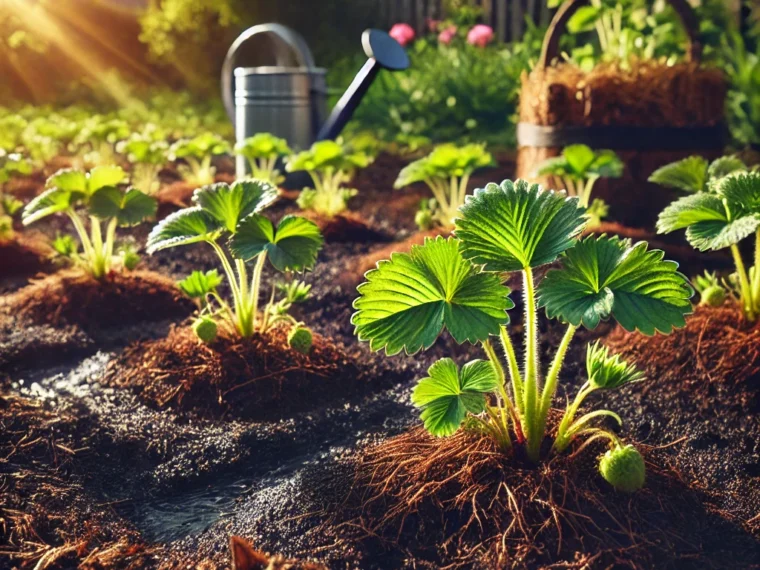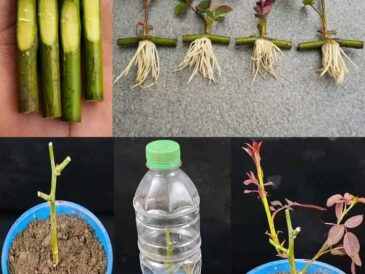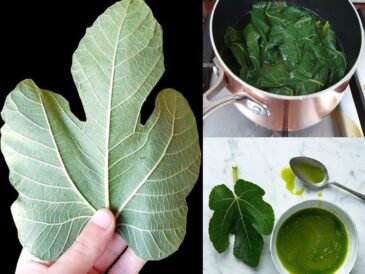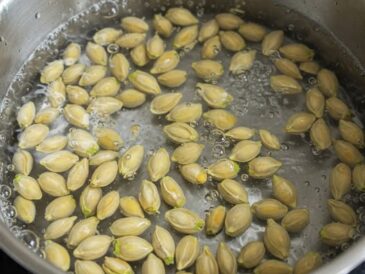- Remove the plants from their packaging.
- Soak the roots in room temperature water for 30 minutes to 1 hour to rehydrate them.
- Do not soak them for too long—this can cause rot.
Step 5: Plant the Strawberries Correctly
- Dig small holes about 12–18 inches apart in rows.
- Spread the roots gently so they’re not bunched up.
- Position the crown (the central growing point) at soil level—not too deep or too high.
- Cover the roots with soil and firm it down gently.
💡 Tip: If the crown is buried too deep, the plant may rot. If it’s too high, the roots may dry out.
Step 6: Water and Mulch
- Water thoroughly after planting to help the roots settle.
- Apply mulch (straw, pine needles, or wood chips) around the plants to:
- Retain moisture.
- Prevent weeds.
- Protect roots from cold weather.
Step 7: Care for Your Strawberry Plants
✅ Watering: Keep the soil consistently moist, especially in the first few weeks. Avoid overwatering.
✅ Fertilizing: Use a balanced organic fertilizer (like a 10-10-10 mix) after new growth appears.
✅ Weed Control: Keep weeds away to avoid competition for nutrients.
✅ Remove First-Year Flowers: For a stronger root system, pinch off flowers in the first few months.
Step 8: Protect from Pests and Diseases
- Use row covers to protect plants from birds and insects.
- Rotate planting locations each year to prevent soil-borne diseases.
- Watch for signs of disease like yellowing leaves or mold and remove affected plants.
When to Expect Strawberries?
- First Year: You may get a few strawberries, but most growth goes into root development.
- Second Year: A full harvest begins!
- Following Years: With proper care, strawberry plants produce for 3–5 years.
Conclusion
Planting bare root strawberries in late winter is an affordable and effective way to establish a strawberry patch. By following these steps, you can enjoy an endless supply of sweet, homegrown strawberries for years to come!
So why wait? Get your bare root strawberries, plant them now, and look forward to a delicious harvest! 🍓🌱




